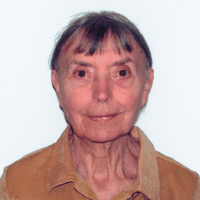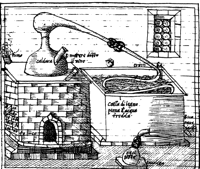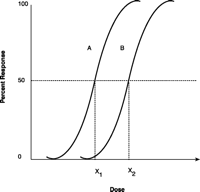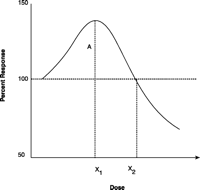The Origins of Pharmacology in the 16th Century
- Stata Norton, PhD, is an Emeritus Professor in the Department of Pharmacology, Toxicology, and Therapeutics, University of Kansas Medical Center, Kansas City, KS. SN has published over 120 research articles, reviews, and book chapters on neuropharmacology and neurotoxicology, especially on the effects of drugs and radiation on the developing central nervous system. E-mail snorton{at}kumc.edu; fax: (913) 588–7501.
In a broad sense it can be argued that pharmacology is the oldest discipline in the health sciences: humans well before the historical record presumably concocted remedies for various illnesses. For example, plants may have been used to cure ailments for over 60,000 years, if the evidence from the graves of Homo neanderthalensis is accepted. Lietava has argued that the analyses of pollen from six plants found on Neanderthal graves indicate that the plants did not grow there, that none of them had attractive flowers, and that all have been used since that time for their remedial qualities (1). More certainly, cuneiform tablets from the library of Ashurbanipal, dated about 2000 BCE, contain detailed descriptions of the preparation of remedies (2).
The word “pharmacology” was not used in print until the 17th century; however, as far back as the 4th century, the word “pharmacum” was used to denote a medicine or drug (3). In the late 1600s, Walter Harris in his Course of Chymistry adapted this late Latin term to “pharmacologia” (4). Coincident with its use in language, the study of pharmacology developed three basic principles that are used today. These concepts were formulated in the 16th century––and serve as a signpost for the origin of modern pharmacology––when the traditional beliefs of Hippocrates (460–357 BCE) and Galen (131–200 AD) were overthrown by the modern ideas of drug action. These three principles are:
-
Each disease has a unique cause for which there is a specific remedy.
-
The “doctrine of signatures” states that each remedy has an identifiable nature or essence that is obtained from the natural product by chemical extraction.
-
The administration of a remedy is based on dose-response by which the appropriate dose is determined.
Although these guiding principles are obvious to a modern pharmacologist, the recognition of their fundamental nature in the use of drugs was a hard-fought battle. To Hippocrates, when the four humors of the body (i.e., black bile, yellow bile, phlegm, and blood) were not in balance, sickness or disease arose and the role of remedies was to restore balance. These four humors were reflected in the temperament of individuals (i.e., melancholic, choleric, phlegmatic, and sanguine) and also in Aristotle’s four elements (i.e., earth, fire, water, and air) out of which all substances were composed. Because earth was said to be cold, fire hot, water wet, and air dry, a useful drug would be classified according to the amount of the elements from which it was composed. For example, in his great herbal, John Gerard (1545–1612) gave the effect of each plant in degrees, stating that the seeds of the flea-wort (Plantago psyllium) were cold in the second degree and that bitter almonds were hot and dry in the second degree (5).
The first significant challenge to the selection of remedies that subscribed to the doctrines of Galen came in the 16th century from those apothecaries who were seeking the active ingredients in plants, minerals, and animal products. Although alchemists have achieved recognition (or notoriety) for the pursuit of the Philosopher’s Stone that was expected to transmute base metals to gold [Ed.: See also the Beyond the Bench article in this issue], a large number of “medical alchemists” (6) were not trying to make gold but rather were trying to find better remedies for diseases. In contrast to information on the uses of specific plant parts as described in the herbals of Gerard and of Turner (5, 7), the medical alchemists emphasized distillation as the most useful method to extract the active ingredient from the inactive dross. One of the most popular books on remedies in the 16th century was by Hieronymus Brunschwig whose first printed edition was published in 1500 as Kleines Destillierbuch (Little Book on Distilling) (8). This popular book on how to distill remedies from plants went through several editions and was widely used in Europe in the 16th century. Other medical alchemists also wrote extensively on ways to extract the active principles from plants and minerals. For example, Paracelsus (1493–1541) proposed extracting the essence or “arcanum” from substances. Other medical alchemists contributed to the challenge that finally overthrew the traditional Galenist doctrines by the end of the next century. The prototype for the extraction of the quintessence was the distillation of wine in which successive distillations were found to increase the “virtue” or power of the distillate, moving from wine to “aqua vitae” (i.e., brandy from the third distillation) to “aqua ardente” (i.e., burning water from the 10th distillation) (9). A typical distilling apparatus used in the 16th century is shown in Figure 1⇓.
Distilling apparatus used in the 16th century. This device was used for extracting the active essence from wine or various remedies. (Reproduced with permission from the Jesuatti MS, 1562, in the Kenneth Spencer Research Library, University of Kansas).
Specificity of Diseases and Remedies
Under the Galenical system, the way to increase the power of a remedy was to add more and more plants that had the opposite action from the humor that was supposedly causing the illness. Thus, a remedy for someone ill with a fever or an excess of choler––that is, the warm-dry humor––would be a mixture of plants that contained cooling virtues, such as fleawort and beech leaves (also said to be cooling and moist in quality). No other characteristics of the illness or the remedies were as important as the fever. The medical alchemists rejected that logic and proposed instead that diseases were uniquely different and required specific remedies. The traditionalists had, in many ways, tacitly admitted this concept. Even Gerard had some doubts about the Galenical system and noted that, even though flea-wort was commonly used in medicine, ingesting too much was harmful and that one should not follow the advice of Galen to take flea-wort orally; he thought it caused sickness rather than curing. In general, the herbals clearly noted that different diseases required different remedies.
Contagion was also beginning to be recognized as a source of disease. One of the ways to keep from catching plague (The Black Death) was to leave town for the relative safety of the countryside. A favorite remedy to prevent plague was to carry some odoriferous plant mixtures and continually inhale their fragrances, the logic of this at least suggesting that the inhaled air was somehow responsible for the contagion. As of 1584, Veronensis (1484–1553) clearly described contagion as an infection passing from one individual to another (10) and Fracastorius (1483–1553) in his 1546 Treatise on Contagion listed several diseases as contagious (11).
Slowly the concept that each disease should be treated with a specific remedy was beginning to contradict the old notions. In 1536, Jerome Cardan (1503–1576) published a treatise on errors in the practice of treatment by the doctors of his period. In describing typhus he said that the doctors mistakenly diagnosed the disease as measles and noted that typhus should not be treated with anything that is used in measles (12). As the four humors were being relegated to oblivion as the cause of disease, a similar change in attitude toward Aristotle’s four elements was developing. One idea that was gaining adherents––taken from translations of the Arabic alchemists––proposed that there were three basic elements in all structures: salts, sulfurs, and mercuries. The use of the plural nouns refers to the idea that these “elements” varied from substance to substance. In particular, the “salt” of a substance was the ash remaining after the alchemist removed the “sulfur” of the substance by fire. Paracelsus and his followers were known to support this idea. At the beginning of the next century, along with some other medical alchemists, D’Espagnet wrote in 1623 (13) that he was skeptical of the idea of these “elements” and instead thought it might be true that all bodies were composed of “atoms,” referring to the atomist theory put forth by Democritus about 420 BCE. But the demise of the four Aristotelian elements for most chemists was not to come until later in the 17th century when Robert Boyle published The Sceptical Chymist in 1661 in which he argued convincingly that both Aristotle and Paracelsus were wrong (14).
Doctrine of Signatures
In its simplest form, the doctrine of signatures stated that plants and other sources of remedies showed by their form a sign of the disease for which they should be used. This concept seems no more satisfactory as a way of selecting remedies than the old Galenical use of the four humors. For example, celandine was thought to be good for jaundice because the plant contains yellow juice (15). Also, the root of the mandrake (Mandragora officinarum), a perennial plant native to southern Europe, was thought to resemble human form. Many fables thus developed regarding the morphology of mandrake root as a curative. Gerard, however, disagreed strongly with the superstitious beliefs surrounding the plant, assuring his readers that the shape of the root was no different from the shape of a carrot root.
Like the doctrine of signatures, the understanding that most drugs should be taken orally developed with the interest in alchemical extraction of active ingredients. However, oral administration was by no means the only way to use a remedy. In the 16th century, peony roots were believed to be effective in epilepsy and other disorders of the mind because the thick, knobby, tuberous root was thought to resemble the brain in some way. Alas, old habits of mind die hard. Peony roots were considered effective both when taken internally and when worn as an amulet. Many remedies––not just for skin conditions––were used as ointments, poultices, and plasters for internal illness. For example, many individuals developed the swollen, hard spleen characteristic of chronic malaria, and although the cause was not known, many remedies for the spleen were placed on the skin over that organ. Fortunately, by appropriating the old doctrine of signatures (because it opposed the theory of humors and the Galenical belief that opposites cured) and refining it (by adding the novel idea that the internal essence of a plant was the true signature or contained the real remedy), medical alchemists furthered the sophistication of disease remediation.
Dose-Response
The concept that the response to a drug is dose-dependent is a basic premise in pharmacology and is an essential part of drug-receptor interaction. Nevertheless, this concept has not always been associated clearly with the use of remedies. When drugs are taken orally, the relation of dose to response is easier to see than when the remedy is applied externally or is used as an amulet or talisman. There are, of course, dose-response considerations in chemicals absorbed through the skin, and modern drugs applied in patches to the skin require some unique pharmacologic investigation (16). There is some evidence that cutaneous absorption of drugs was recognized in the 16th century. Methods for cleaning the skin and for increasing vasodilation in the areas of application of ointments and poultices were commonly employed. Warm unguents were rubbed into skin that had first been cleaned with warm alcohol (e.g., wine), and if large areas of the skin were to be covered with an ointment, the patient was advised to stand in front of the fire (17).
In oral administration, the relationship of dose to effective action was sometimes clearly stated. Prescriptions often included a statement of the amount to be used, so that a specific amount in ounces or drams should be given as a dose. One prescription from 1562, which proposed a mixture of equal amounts of hyoscyamus (Hyoscyamus niger) and opium, stated clearly that giving one dram to a person caused sleep. A precise comment about dose-response was added: “If you want him to sleep less, give him less” (18). It was often recommended that children be given lower doses than adults.
Historically, Paracelsus’ outspoken dismissal of Galen and Galenical remedies containing mixtures of plants was a catalyst that encouraged others to reject tradition and resort to experimentation. Like all successful challenges to tradition, the 16th century was a time when the desire and need for change was widespread. With the arrival of medical alchemy and the ability to extract remedies from plants or minerals by fire with various types of equipment, the age of pharmacology had arrived. The necessity for equating disease with the four humors was quietly ignored by many medical alchemists but managed to linger on unhealthily in the teachings of the medical schools where the tradition of Galenical remedies persisted for another century and where disagreement with the abrasive Paracelsus was strongest. Although Paracelsus was the most vocal critic of Galenical remedies, he did not reject plants as sources of remedies. One of his most popular prescriptions for treating patients contained opium, along with gold, pearls, and laudanum. The last ingredient was a gummy resin from a plant native to Europe, the rock rose (Cistus ladanifer), but the name “laudanum” became attached to the only active ingredient, opium, and tincture of opium is still known as laudanum.
A more important contribution from Paracelsus [found in his Seven Defenses, or the Reply to Certain Calumnations of His Enemies (19)], however, is the well-known statement that it is only the dose that makes something beneficial or harmful: “All things are poison, and nothing is without poison: The Dosis[sic] alone makes a thing not poison. For example, every food and drink, if taken beyond its Dose, is poison.” In pharmacologic terms of dose-response, Paracelsus’ statement is best described by two dose-response curves (Figure 2⇓), where line A is a plot of percent response of a population for a desired effect against dose and line B is a plot of percent response for a side effect in the same population. The plot in Figure 2⇓ assumes normal distribution for both lines A and B.
Dose-response relationship illustrating Paracelsus’ quotation using two variables. At dose X1 50 % of a population shows the desired action (A) and at dose X2 50 % of the same population shows an undesired action or side-effect (B).
The importance of dose-response in the study of drugs is paramount in bioassays that determine the potency of preparations and that aid the development of potential drugs. As early as 1733, De Moivre published the equation for normal distribution of a variable (20). Over a century later, in 1879, Galton proposed that variation in susceptibility of individuals was related to the curve of normal distribution (21). When the percent reponse plotted against the log of the dose is normally distributed, the resultant symmetrical curve resembles a drawn-out S-shape. The ED50 (dose effective in 50% of the test procedures) became important in bioassays for comparing the effectiveness of two preparations. The similar concept of the LD50 (the dose that kills 50% of the test organisms) was also developed. Statistical methods were created for finding the best-fitting lines for ED50 and LD50 determinations. The statistical argument that made the 50% dose the most valuable was that variance was at a minumum at this point. Probit analysis (22) was developed for evaluating variance and was based on the assumption of normal distribution. Data were transformed into a straight line when percent responses, converted into normal equivalent deviates (probits), were plotted against doses on a logarithmic scale. Such results could be expressed as LD50 ± S.E.
In any such calculation, the basic assumption is still that the data are normally distributed, and this is a reasonable assumption for much biological data; however, many special cases occur in which other distributions are routinely encountered. One such case is when a drug (or other chemical) may initally enhance a response followed by inhibition with increasing doses, resulting in an inverted U-shaped doseresponse relationship (Figure 3⇓).
Dose-response relationship where the nature of the response changes with increasing doses. With increasing doses the response increases from the initial conditions up to dose X1. As the dose is increased further, the response decreases. Starting at dose X2 the response is below the initial conditions.
Numerous examples of the inverted-U curve (also called hormetic dose-response) in immunopharmacology have recently been reviewed (23). The statement by Paracelsus on the effect of increasing doses, where a drug first helps and then harms, could be considered an example of hormesis (24).
The various applications of dose-response have been major factors in the development of modern pharmacology and in understanding the mechanism of action of drugs. The importance of dose-response goes well beyond the early emphasis on the percentile response, although this is still a powerful tool for analysis of data and has played a major role as the study of drugs emerged from the long period during which the relationship between cause and cure was not precisely recognized. Modern pharmacology can involve studies of drugs based not on populations but on individual responses to drugs, with regard to specific genetic differences. These studies would have amazed and delighted the 16th century alchemist and apothecary who often based his “proof” of the effectiveness of his remedy on success in two out of three patients. Indeed, the physicist Herman Von Helmholtz (1821–1894) said that all science is measurement and that applies to pharmacology no less than to physics.
- © American Society for Pharmacology and Experimental Theraputics 2005
References

Stata Norton, PhD, is an Emeritus Professor in the Department of Pharmacology, Toxicology, and Therapeutics, University of Kansas Medical Center, Kansas City, KS. SN has published over 120 research articles, reviews, and book chapters on neuropharmacology and neurotoxicology, especially on the effects of drugs and radiation on the developing central nervous system. E-mail snorton{at}kumc.edu; fax: (913) 588–7501.






